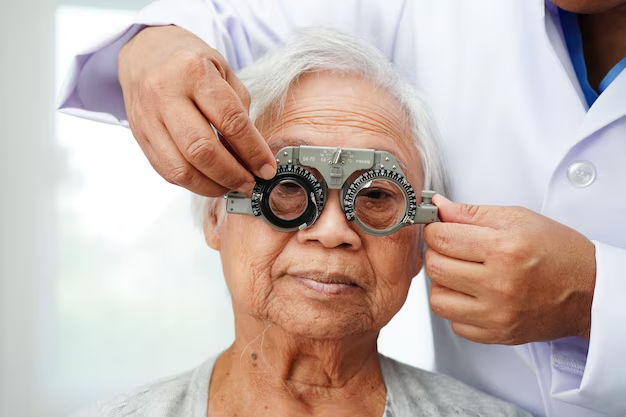Understanding Cataracts: Options and Insights Into Treatment
Cataracts are a common eye condition, particularly among older adults, affecting vision by clouding the normally clear lens of the eye. This condition can make daily activities challenging, thwarting the ability to read, drive, or perceive details clearly. But fret not — there are proven strategies and interventions to manage and potentially "cure" cataracts. Let’s delve into what cataracts are, the signs and symptoms, and explore the treatment options available.
🤔 What Are Cataracts?
A cataract develops when proteins in the lens of the eye clump together, leading to clouded vision. This condition is most commonly related to the aging process, but it can also result from other factors, such as injury, diabetes, or prolonged exposure to ultraviolet light. Recognizing the symptoms early can be crucial in seeking timely medical intervention.
Symptoms of Cataracts
Here are some common indications that cataracts might be affecting your vision:
- Blurred Vision: Like looking through a frosty or fogged-up window.
- Sensitivity to Light: Bright sunlight or indoor lights can be uncomfortable.
- Halos Around Lights: Glare can appear around car headlights or street lamps.
- Color Discoloration: Colors may seem faded or less bright.
- Frequent Prescription Changes: More frequent updates to glasses or contact lenses might be necessary.
Recognizing these symptoms accurately and early on helps in exploring the right treatment steps.
🔍 Diagnosis and Assessment
Before considering the treatment options for cataracts, an eye examination by a professional is essential. This typically involves:
- Visual Acuity Test: To measure the sharpness of your vision.
- Slit-Lamp Examination: This helps in identifying abnormalities in the lens.
- Retinal Exam: Post pupil dilation, the back of the eye is examined to assess the presence of cataracts.
These tests provide a comprehensive assessment of the extent of cataracts and help decide the appropriate treatment path.
🌟 Treatment Options: Surgical and Non-Surgical Approaches
While cataracts are a natural part of aging, they do not always require immediate action unless they significantly impair vision. Here’s a closer look at the available treatment strategies:
Non-Surgical Strategies
For those in the early stages, specific lifestyle adjustments can help manage symptoms:
- Better Lighting: Using brighter lights at home and work can help.
- Magnifying Lenses: These tools can aid in reading small print.
- Antiglare Sunglasses: Protective eyewear can help reduce sensitivity to light.
- Updated Eyewear: Regular adjustments to your prescription can optimize vision.
Although these measures can help manage symptoms, they do not stop the progression of cataracts.
🏥 Surgical Treatments
When cataracts impede daily life significantly, surgical intervention may become necessary. Cataract surgery is one of the most common and successful procedures performed today. Here’s what you need to know:
Cataract Surgery Process
- Preparation: The surgeon numbs the eye with medication. Anesthetic drops or injections may be used.
- Lens Removal: The clouded lens is removed, often broken into smaller pieces using high-frequency ultrasound.
- Lens Replacement: A clear, artificial lens called an intraocular lens (IOL) is implanted in place of the natural lens.
Types of Intraocular Lenses (IOLs)
Patients have different options for IOLs, including:
- Monofocal IOLs: These provide clear vision at one distance, usually focused for distance.
- Multifocal IOLs: Designed to improve vision at close, intermediate, and long distances.
- Toric IOLs: Specifically designed for patients with astigmatism.
🤝 Recovery and Aftercare
Post-surgery, most patients experience a significant improvement in vision. Here are some steps involved in recovery and aftercare:
- Protective Eyewear: Wear sunglasses to protect the eyes from UV light.
- Prescribed Medications: Follow instructions for eye drops to aid in the healing process.
- Follow-Up Visits: Regular check-ups to assess healing and measure visual improvements.
Most individuals regain excellent vision, and former cataract-related symptoms fade away after recovery.
🌿 Potential Complications and Considerations
Like any medical procedure, cataract surgery carries risks, albeit rarely. Complications may include infection, bleeding, or retinal detachment. However, the occurrence of these complications is minimal due to advancements in surgical techniques. Discussing these risks with a healthcare professional ensures patients make informed decisions.
Technology and Innovations
Recent innovations in cataract surgery and lens technology have further enhanced safety and outcomes. Laser-assisted cataract surgery and advances in IOL designs continue to offer promising future directions.
💡 Key Takeaways and Considerations
To wrap up, here are the essential points that provide a snapshot of cataract treatment and management:
- Be Observant: Recognize the symptoms of cataracts early.
- Seek Professional Advice: A professional diagnosis aids in planning the treatment path.
- Consider Non-Surgical Strategies: Use lifestyle changes to cope with symptoms initially.
- Evaluate Surgery Candidacy: If cataracts hinder daily activities, surgery can be a viable option.
- Understand IOL Options: Individual needs and preferences determine the choice of lens.
- Follow Aftercare Protocols: Compliance with healing and follow-up recommendations is vital.
👁️ Tips for Managing Cataracts
Here's a quick 📝 bullet-point list of practical steps to consider for managing cataracts and maintaining eye health:
- 🔍 Regular Eye Exams: Schedule routine check-ups even if no symptoms are present.
- 🕶️ Use Sun Protection: Sunglasses with UV protection help preserve eye health.
- 🍎 Maintain a Healthy Diet: Nutrients like antioxidants can promote eye health.
- 🏃 Stay Active: Regular exercise supports overall eye health.
Understanding these aspects empowers individuals to take control and make informed decisions regarding their eye health. Cataracts, a common part of aging, are effectively managed with current medical advancements, ensuring that vision clarity and quality of life are preserved.
